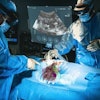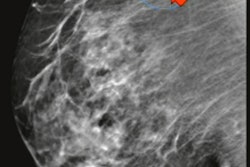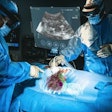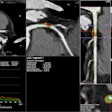
The majority of chief radiology residents perceive virtual learning to be less effective than in-person learning, according to results published February 20 in Academic Radiology.
Researchers led by Dr. Allison Khoo from Washington University in St. Louis also found that about one-third of chief residents reported less procedural exposure during the COVID-19 pandemic, while a few felt uncomfortable with basic procedures.
"The COVID-19 pandemic had a profound impact on radiology training, particularly in terms of virtual learning," Khoo and colleagues wrote. "These survey results suggest that although digital learning offers increased flexibility, most residents still prefer in-person readout and didactics."
Each year, the American Alliance of Academic Chief Residents in Radiology conducts a survey for chief residents in accredited North American radiology programs. For the 2021/2022 academic year, the survey covered two special topics, procedural competency, and virtual radiology education in the pandemic.
A recent report by a task force from the American College of Radiology suggested that fellowship-trained radiology graduates were increasingly "unable, uncomfortable, or unwilling" to perform basic interventional radiology and fluoroscopic studies. For virtual learning, programs nationwide quickly adopted virtual learning and clinical education techniques since the start of the COVID-19 pandemic in 2020.
Khoo and co-authors wanted to summarize the survey findings, aiming to understand the perceptions of chief residents when it comes to virtual learning's comparative effectiveness and procedural competency.
They looked at survey data from 110 chief residents from 61 programs. Out of these, 80% of programs maintained just in-person attending readouts throughout the pandemic. However, 13% of programs reported just in-person didactics and 26% converted to all virtual didactics.
The researchers found that most chief residents indicated that virtual readouts (74%), virtual case conferences (62%), and virtual didactic lectures (53%) were less effective than traditional in-person methods. The top five factors contributing to these perceptions as indicated in the survey results were decreased attending engagement in radiology education, poorer quality of didactics, fewer professional development and mentorship opportunities, and decreased procedural exposure.
The researchers also found that despite transitioning to virtual formats, 68% of respondents indicated there was no change in resident autonomy.
For procedural exposure meanwhile, 21% of chief residents indicated that they desired a job with no procedures. While 74% indicated that they felt adequately trained for a job that would contain a procedural component, 34% reported decreased procedural exposure during the pandemic.
Also, 7%-9% of chief residents felt uncomfortable with basic procedures. These included basic fluoroscopy examinations, basic aspiration and drainage procedures, and superficial biopsy procedures.
The team also reported that the number of programs with 24/7 attending coverage increased from 35% in 2019 to 49% in 2022. Additionally, body radiology, neuroradiology, and interventional radiology were the most popular advanced training options among graduating radiology residents.
Despite the trends seen in virtual learning, the study authors noted that this will "likely remain a viable option" from here on out. They pointed out virtual learning's "convenience, accessibility and increasing productivity." The authors also called for future studies to analyze the longer-term effects on the future radiology workforce.
"The collective chief radiology residents' perceptions may be a valuable resource for programs," they wrote. "Our findings regarding virtual learning in the COVID-19 pandemic may influence decisions that shape the long-term future of radiology education."




















